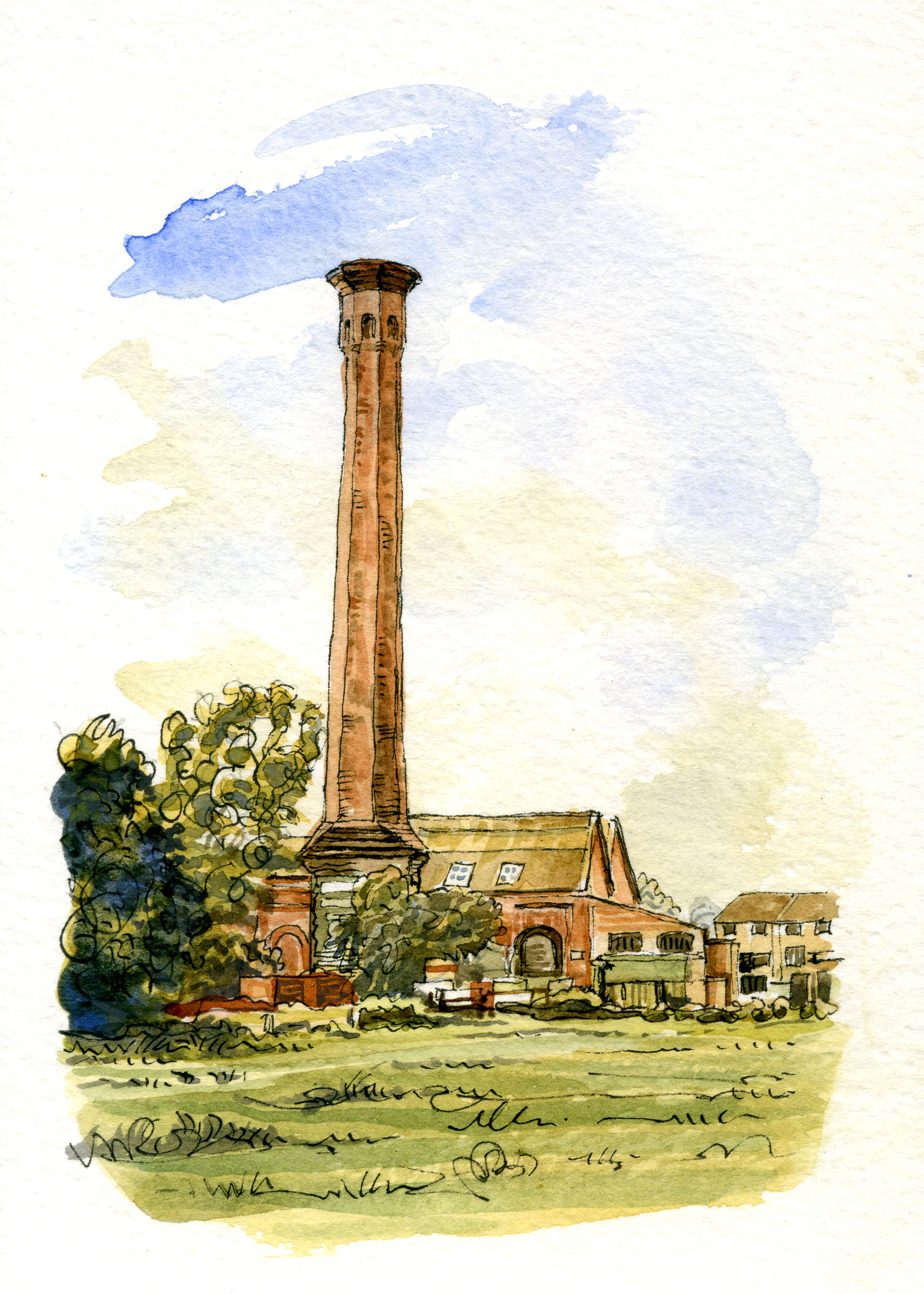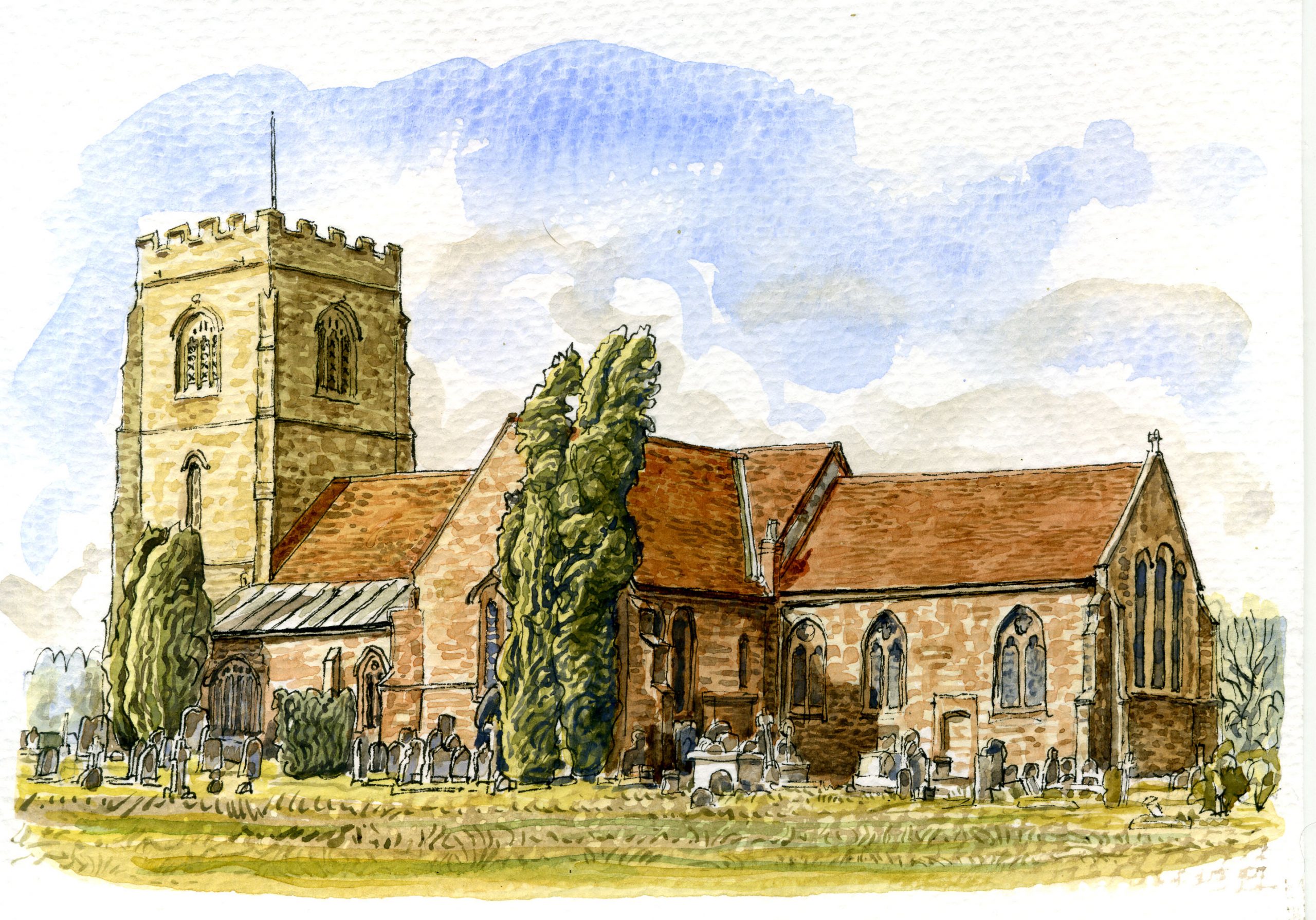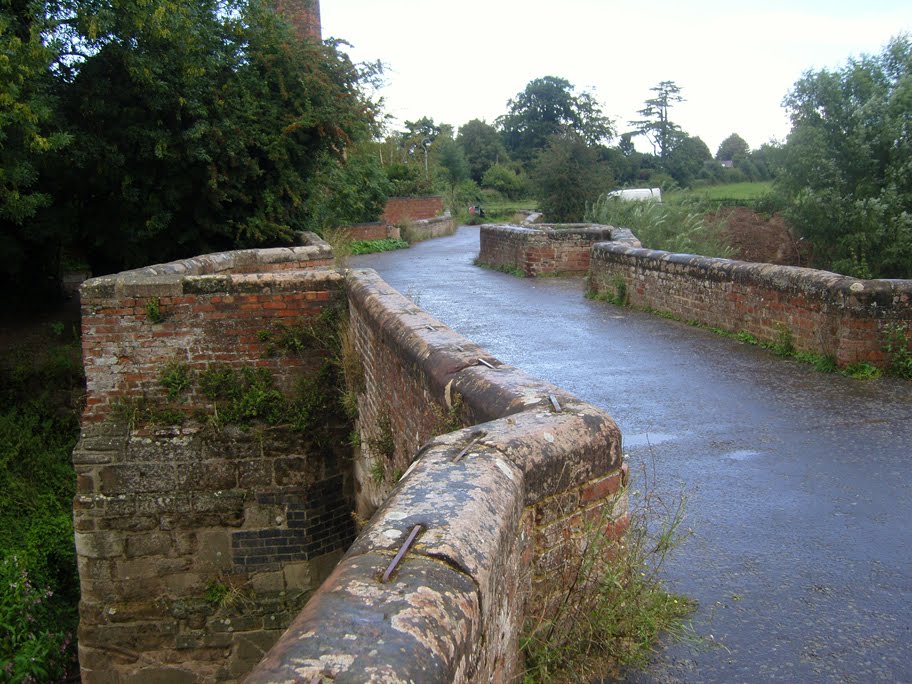Exploring local landmarks
Near Powick Bridge there is an interpretation board alongside a cycleway. Follow the cycleway to the left to go to Powick and Powick Church. Go right to Powick Bridge and Powick Mills. Below, you’ll find information about these notable landmarks around Powick.

Powick Mill by Ian Gibson
Powick Mills
The tower you can see to the right is part of Powick Mills, once one of the largest hydro-electric works in the country. The site, by the River Teme, was home to various mills over the centuries that took advantage of the riverside location. The hydro and steam electric station was opened in 1894 and operated by the Corporation of Worcester, making it the world’s first municipal hydro-electric plant. When the power station opened in Worcester it was water powered only. The laundry which was on the site was water powered until the 1950s.
There’s more about Powick Mills and electricity generation in Worcester on the Explore the Past blog – When Worcester supplied it’s own power.
The mill is now converted into private residences, so please keep to Public Rights of Way.
Powick Bridge
Powick Old Bridge was built before 1447, with records noting that whoever built a bridge here would get an ‘indulgence’ and be let off punishment for sins after they died. The old bridge has been repaired many times over the centuries but still stands today. It was superseded as the main river crossing in 1837, when an iron bridge was built nearby.
Powick Bridge is associated with the English Civil Wars, when supporters of the King and parliament fought for control of the country. The first and last battles of the Civil Wars took place around Powick: the Battle of Powick Bridge in 1642 and Battle of Worcester in 1651. Find out more about the Civil Wars on the Battles page, or explore the new insights revealed by archaeological investigations.
Powick Church
The Church of St Peter and St Lawrence is one of the oldest buildings in the village and a key part of the community. The building mostly dates to the 13th and 14th centuries, with a few earlier traces and a tower built in the early 15th century.
Like many churches it was altered during in the 19th century, with changes to the entrances and refitting of the interior. During WWII the tower was used as an observation post by the Home Guard.
The church would have seen soldiers coming and going throughout the English Civil Wars and was close to the action during the Battle of Powick Bridge in 1642 and the Battle of Worcester in 1651. Stonework on the tower still shows evidence of musket shot and bayonets being sharpened. The church also contains a memorial to Sir Daniel Tyas, Mayor of Worcester during the Civil Wars.
The church is often open to visitors and there are plans to have information there about the church’s history, village and its Civil War links.

Powick Church by Ian Gibson


